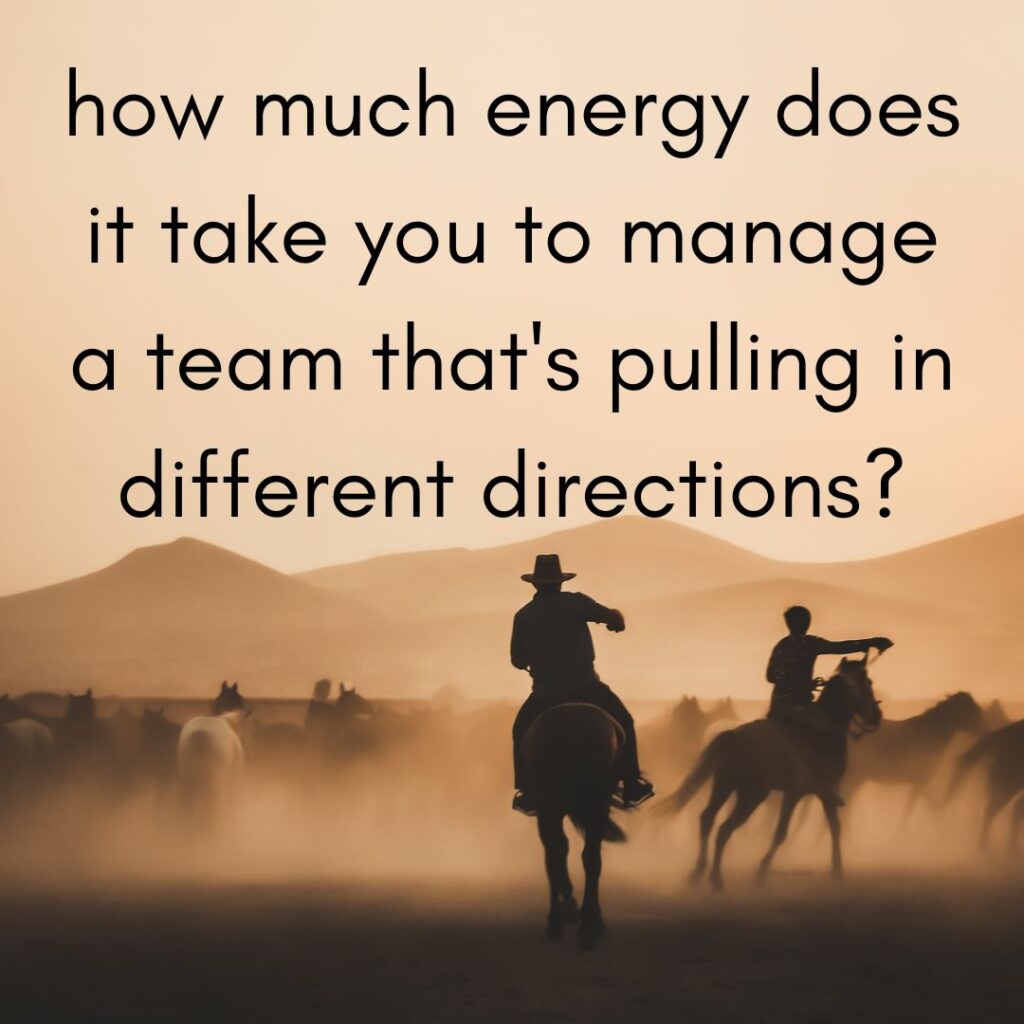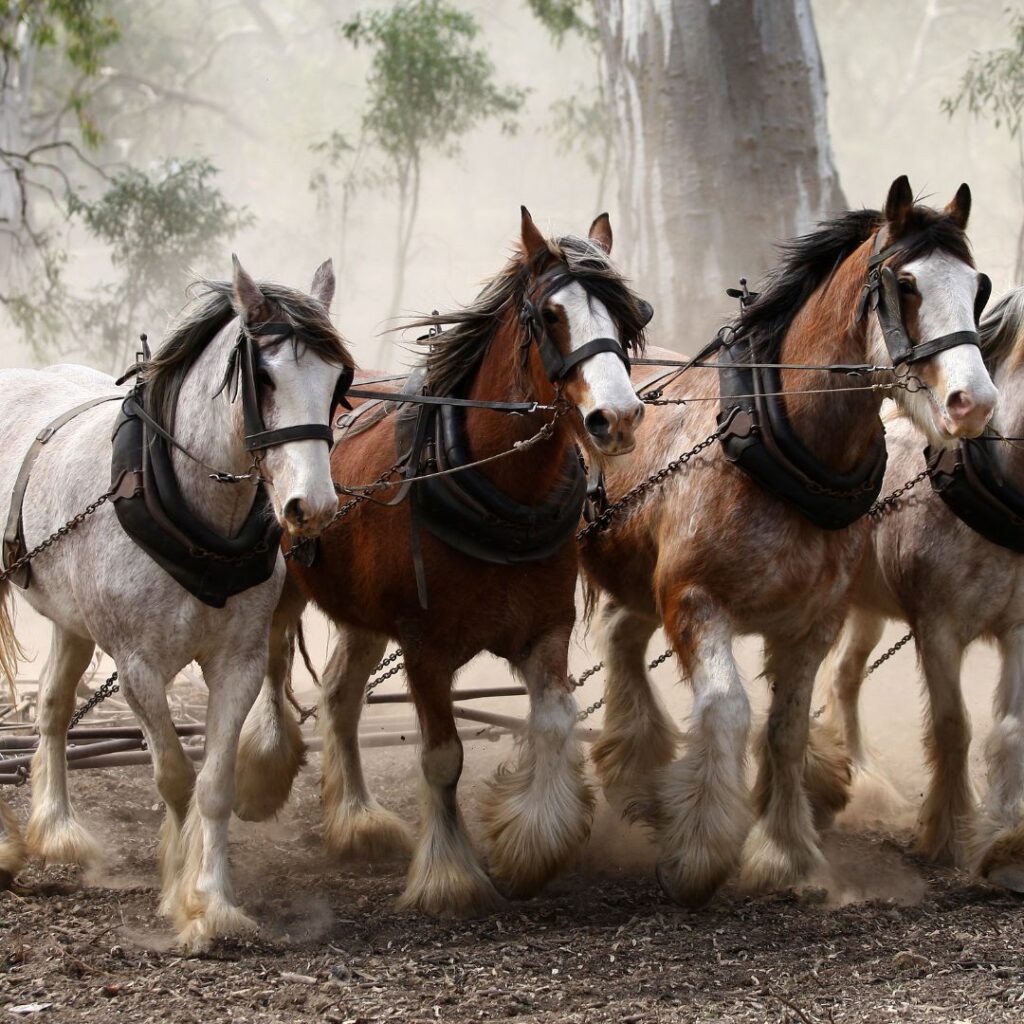When you think about your team:
- are you managing one team or a number of teams?
- is your team a group of individuals or is it a subset of individuals doing their own thing
- do they think they are there to deliver different things?
- Why does it matter?
A high performing team is a cohesive team
The research shows that cohesive teams report lower levels of stress. They have less absenteeism, fewer leavers and report enjoying their jobs more. But there’s also a hidden benefit that affects you as their manager.

How much energy does it take to manage a team that’s not cohesive?
It can be like playing whack a mole.
Have you ever seen a picture of a horse logging team? In New Zealand’s pioneering days, horse and bullock teams were used extensively to move felled logs out of the forest. The team could be as small as two clydesdale draught horses and a group of as many as eight draught horses.

A Clydesdale horse weighs between 700-900 kgs, depending on whether it’s male or female.
One totara log could weigh as much as 700 kgs.
That team is driven by one driver. The key is the cohesiveness of that team. It wasn’t just about getting those logs out of the bush. It was about getting those logs out safely.
Choose behaviour over outcome
One of the most common misconceptions about cohesive teams is that it’s all about the outcome. And that as long as the team pulls together to deliver the things that and that as long as the team pulls together to deliver the things, then that’s a cohesive team.
But here’s the thing. If we’re only focused on the outcome, we become rigid in our desire to achieve that outcome. There’s no room for innovation because that takes time. The human element also disappears. A team is a container for people. We have good days and we have bad days. Stuff at home that we bring to work. Stuff at work that we bring home. And in the theme of so many of those blockbuster movies, nobody should get left behind.

How do you ensure that somebody on the ground with their hand up asking for help, asking for support doesn’t get left behind while the rest of the team marches determinedly on?
You focus on building cohesive behaviours over the outcome.
How team behaviours lead to a successful outcome

It’s not what we deliver. It’s how we deliver and who we’re being on a day to day basis.
And in case you’re wondering where the deadline is, when we focus on our team behaviours, commitment or integrity that comes from doing what we said we would do and that can be managed through team behaviours.
What are your team’s key behaviours?
Our first strategy is about understanding what behaviours need to be consistently demonstrated within our team, and those consistent behaviours start with you role modelling the way. Visibility is the key to consistency with this one. Create a weekly check-in ritual where you reflect on your week.

How often did you demonstrate those predefined team behaviours?
Were there moments that could have been better?
What led to those moments?
What could you do differently?
Our behaviour can be a reflection of other forces in play. Can you tweak your self-care routine so that you have more energy in the tank?

When you see aligned behaviour in your team take notice, provide that ‘in the moment’ feedback. It can be as simple as a quick but heartfelt, “I like what you did there”.
Celebrate those team behaviours collectively, and when you notice unhelpful behaviours, act on them. Be transparent with your team when it’s your behaviour.
We’re all human. Practise providing individual feedback in the moment. Don’t save it up for the weekly meeting or the six monthly performance review.
Feedback is based on behaviour not identity
And remember, we’re correcting behaviour, not identity, so keep it evidence-based and objective. Be really clear with your team on why your team is there and how your team contributes to your organization’s purpose.
In your individual conversations, reinforce your team’s purpose and how they contribute to that overall purpose. This isn’t a once year dusted off for the annual plan thing. Your team’s purpose and how each person contributes to that purpose needs to be reinforced continuously and in different ways. Great communication is everything in a cohesive team.
What is great communication?
It’s the one I hear time and time again in poorly performing teams. We need to communicate better. What does that even mean? Communication is such a personal thing. What feels like great communication to me may feel like poor communication to you.

We each have preferred communication styles based on our primary and secondary learning styles, and it can be helpful for the team to understand who has a visual, auditory or kinesthetic learning style and practical ways that they can bring these styles into interacting with each other.
As a leader it’s important that you can communicate using all of these learning styles, particularly when you’re reinforcing your team’s purpose and preferred behaviours.
Spend some time brainstorming how you’ll do that so that it doesn’t happen by accident. A cohesive team is always a work in progress. It doesn’t happen overnight, and as a leader it requires energy and devotion to ensure those team behaviours are at the fore.
But the advantages of a cohesive team not just in terms of productivity but also in terms of the joy and the well-being of the people you spend most of your waking hours with, these all outweigh the initial effort needed to get the wheels turning.

